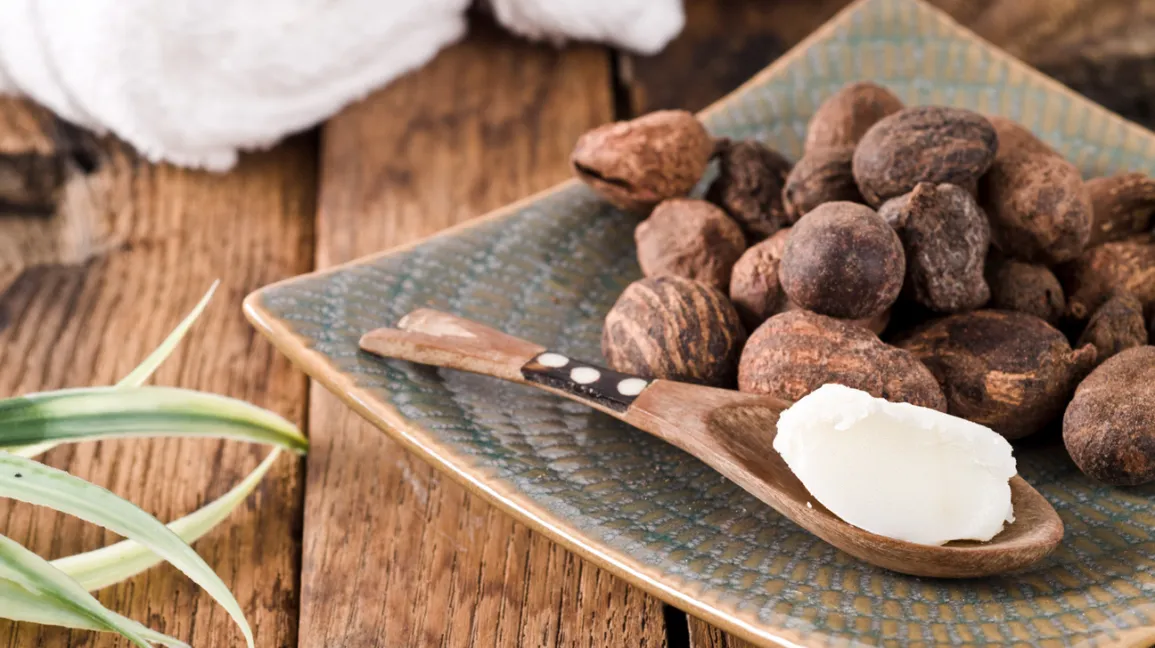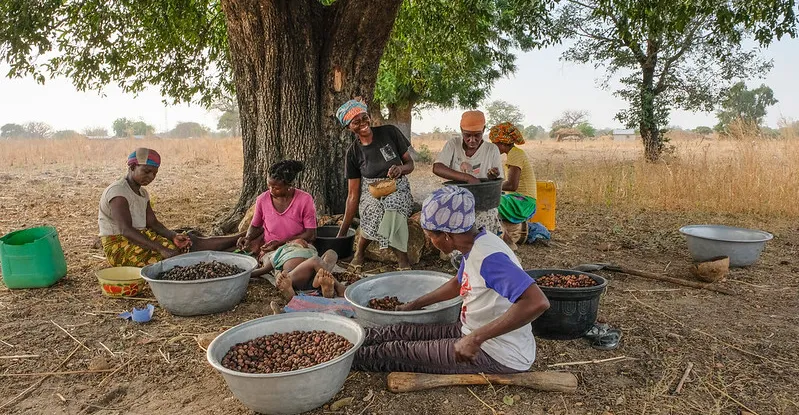Last Updated on June 3, 2024 by Annie Baldwin
Shea butter has become a popular ingredient in skincare and cosmetics.
But is it sustainably sourced and environmentally friendly?
Let’s take a look at the production process and its impact.
Is Shea Butter Environmentally Friendly?

Shea butter is considered an eco-friendly product.
The shea nuts are harvested by hand from wild-growing trees without harming the trees or the surrounding environment.
Shea trees capture more CO2 than they release and provide income for local communities.
With a lifespan of 200-300 years, shea trees are a renewable resource.
Key Points
- Shea trees are not cut down during harvest and live for hundreds of years
- Traditional production supports local communities in Africa
- Shea butter is biodegradable and moisturizing for skin
Our Opinion
As skincare experts, we believe shea butter is one of the most sustainable moisturizing ingredients available.
The hand harvesting techniques preserve shea forests, and community-based production empowers women in West Africa.
With proper oversight, shea butter can be produced ethically and benefit local economies while meeting global demand.
We recommend choosing certified organic and fairtrade shea butter.
Is Shea Butter Sustainably Sourced?

Shea butter is derived from the nuts of shea trees found in West African countries. The trees can live 200-300 years, providing a renewable source of shea nuts. Shea butter production begins with women hand-picking and transporting ripe nuts. This hand-harvesting supports local economies without modern machinery that could damage the surrounding ecosystem.
Shea trees are actually carbon-negative, absorbing more CO2 than they emit. And shea butter itself is biodegradable, so it doesn’t linger in the environment. To ensure sustainability, shea butter can be certified organic, fair-trade, and GMO-free.
Overall, shea butter is considered one of the most sustainable ingredients globally. The hand-harvesting techniques preserve shea forests for future generations. The production process supports local communities economically, all while maintaining a light environmental footprint. So yes, sustainably sourced shea butter is environmentally friendly.
Where Does Shea Butter Come From?

Shea butter originates from the nuts of shea trees, which grow naturally in the savannah regions of West Africa. The Karite shea tree is indigenous to countries including Ghana, Mali, Burkina Faso, Benin, and Nigeria. Here, the collection and production of shea nuts provide income for local women.
Shea trees start producing fruit at around 10-15 years old. The fruit consists of a thin, vitamin-rich pulp surrounding shea nuts. After collecting fallen fruits, women remove the pulp and crush the nuts to extract a fat-rich residue. This crude shea butter is then boiled, filtered, and cooled to produce pure, nutrient-dense shea butter.
For centuries, shea butter has been used locally in Africa for food preparation and as a moisturizing hair and skin treatment. Its rising popularity globally is now providing increased economic opportunities for rural African communities. So while shea butter products are enjoyed worldwide, their origin remains the indigenous shea groves of West Africa.
How Is Shea Butter Produced?
The production of shea butter is a labor-intensive process focused on women’s work. It begins with collecting the fallen shea fruits, removing the pulp, and extracting the prized shea nuts inside. The nuts are then crushed and mashed to release the raw shea butter.
This butter is boiled, filtered, and cooled into a solid form. Traditionally, the women would hand-beat this creamy butter to further refine it. Today, some facilities use mechanical processes for efficiency. However, many artisans still handcraft batches of shea according to centuries-old techniques. This preserves the integrity of the precious butter.
Whether mechanized or handcrafted, the goal is to produce high-quality, unrefined shea butter. This requires meticulous care in handling the raw ingredients and managing the production process. The result is a nutrient-rich product that retains its natural color, aroma, and skin-nourishing properties.
From tree to shelf, ethical and sustainable practices ensure shea production supports women’s livelihoods and maintains the supply of this miracle ingredient.
Is Shea Butter Biodegradable?
The short answer is yes, shea butter is biodegradable. This natural plant-based product comes from the nuts of Vitellaria paradoxa trees native to Africa. With no synthetic ingredients added, unrefined shea butter contains only substances that can break down and decompose back into the environment.
Shea trees absorb carbon dioxide as they grow, making shea a renewable and sustainable resource. The production process also uses very little energy compared to heavily industrialized vegetable oils. This keeps the carbon footprint low.
Once applied to the skin, shea butter biodegrades safely over time. This makes it an eco-friendly alternative to petroleum-based moisturizers. The fatty acids and vitamins in shea nourish the skin through absorption. But the excess slowly deteriorates rather than accumulating toxins.
Overall, shea butter checks the boxes for sustainability. It comes from a renewable source, has ethical production practices, and decomposes back into the earth. Using shea butter supports environmental health while providing natural skin care.
Does Shea Butter Harm the Environment?
No, when sourced ethically, shea butter does not harm the environment. On the contrary, it provides income for rural communities in West Africa while protecting the land.
Shea trees grow wild, without needing fertilizers or pesticides. Collecting and selling the nuts gives locals an incentive to keep the trees flourishing. This prevents deforestation and promotes biodiversity.
Processing shea butter does require some fuel wood for energy. But using efficient cookstoves reduces excess burning. Sustainable practices also recycle water and nutrients back into the land.
The biggest threat to shea trees currently is climate change. Rising temperatures and erratic rainfall can affect growth. Supporting the shea butter industry helps provide resources to address these environmental challenges.
Overall, shea butter relies on and preserves nature when produced responsibly. It regenerates the land while generating ethical income. Using shea butter nourishes your skin in an eco-friendly way.
FAQ
Is Shea Butter Sourced Ethically?
Shea butter is primarily sourced from women’s cooperatives in West Africa, providing jobs and income to local communities. The nuts are handpicked and processed using traditional methods without machinery.
Is Shea Butter a Renewable Resource?
Yes, shea butter is renewable. Shea trees can live 200-300 years and do not need to be cut down to harvest the nuts. The trees continuously produce nuts throughout their lifespan.
Is Shea Moisture Environmentally Friendly?
Shea Moisture aims to source ingredients sustainably and ethically. They partner with women’s cooperatives in Africa and invest in community programs. Their products are not tested on animals.
Is Shea Butter Endangered?
No, shea butter is not endangered. Shea trees grow across Africa in over 20 countries. Production is increasing to meet global demand. Conservation efforts are in place to protect shea forests.
Conclusion
Shea butter is an environmentally friendly ingredient. Shea trees are a renewable resource that can live for centuries without being cut down. The traditional hand harvesting techniques do not damage the trees or ecosystem. With proper oversight, shea butter production can support local communities in Africa. Overall, shea butter is a sustainable moisturizing solution.
